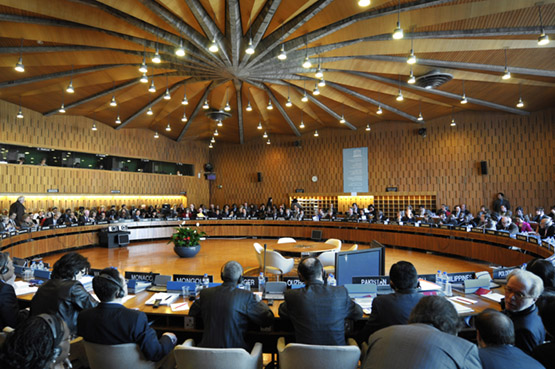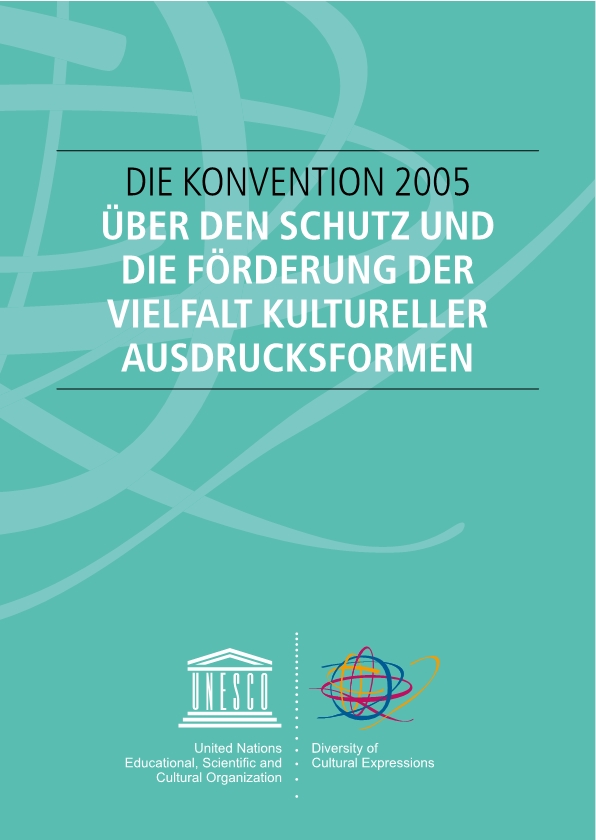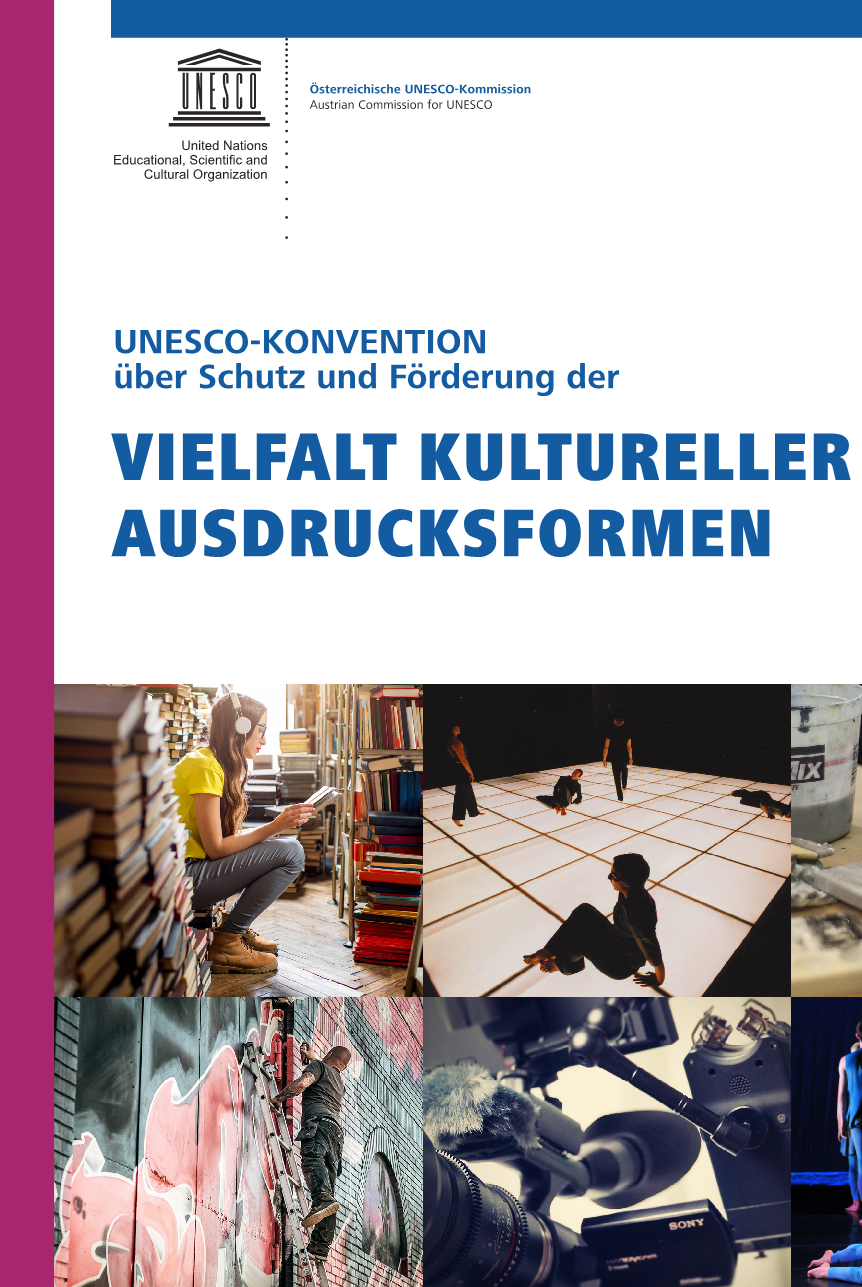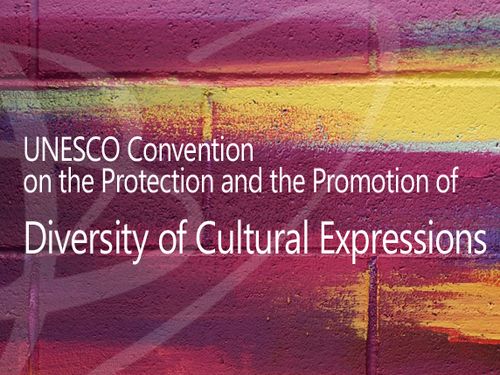
On 20 October 2005, the international community adopted the Convention. There are now 152 Parties that have joined the Convention, including all EU member states, the European Union and numerous emerging and developing countries.
The Convention is the first binding legal instrument under international law that focuses on contemporary art and culture and defines principles of cultural policy for the protection and promotion of the diversity of cultural expressions. It is therefore widely known as the “Magna Carta of cultural policy”.
Why is the Convention necessary?
- Art and culture are more than mere commodities. The Convention was the first international legal instrument to recognise that cultural goods and services can convey identities and express values and aesthetic perspectives. They also have an economic significance as goods and consumable products, but their value cannot be quantified by financial means. As such, they should not be treated as mere merchandise. Of course, this perspective had already been widely adopted even before the Convention was passed, yet there was no legal groundwork for it.
- Recognising the sovereign right of states to maintain, adopt and implement cultural policies: This may also seem self-evident; however, in fact, the freedom of states to shape cultural policy is significantly influenced by the obligations the states have entered into as part of international trade agreements. As such, deregulation obligations may prevent states from establishing measures to support national cultural production or from promoting minority and niche programmes. These kinds of measures would be considered “unfair competition” in contrast to the free play of forces in a deregulated market. As such, the Convention enshrines the right of states to implement cultural policies and to preserve their freedom to shape cultural policy, including in future trade agreements.
What is the objective of the Convention?
- A new framework for informed, transparent and participatory systems of governance for culture: Through cultural policy measures, states should create conditions that facilitate the creation, production, distribution and access with regard to diverse cultural goods and services and contribute to informed, transparent and participatory systems of governance for culture.
How will this objective be achieved?
- Protection of human rights and fundamental freedoms: The foundation of any form of cultural policy as defined by the Convention is a respect for human rights and fundamental freedoms. Freedom of expression, information and communication are the prerequisites for creativity and distributing diverse forms of cultural expression. Likewise, the principles of individual and societal cultural self-determination enshrined in the Declarations of Human Rights are to be protected: The personal freedom to choose artistic and cultural forms of expression and the right to free and equal cultural participation.
Examples of fields of application: Protection of artistic freedom; support for the social and economic rights of artists; support for gender equality in the art and culture sector.
- Creating favourable conditions based on substantiated, transparent and participatory political processes: On a national level, the Convention aims to foster suitable conditions for establishing and/or protecting a diverse artistic and cultural landscape. As such, alongside cultural policy more narrowly, the Convention also relates to the areas of policy that have an impact on cultural creativity, the cultural activities on offer and cultural participation – from educational policy to media policy and economic and trade policy. This requires different public authorities and government levels to work together. Furthermore, civil society plays a fundamental role in promoting diversity in cultural expressions. On the one hand, it contributes to diversity through its own measures and on the other, it draws upon valuable expertise and experience gained through the application of cultural work. The Convention therefore requires civil society to participate actively in processes for establishing and monitoring policy.
Examples of fields of application: Measures for improving the social situation of artists, adapting cultural policy conditions to the digital environment; interministerial working groups and forums for involving civil society.
- Simplifying international cultural exchange: Encouraging diversity in the range of cultural content on offer will also lead to the promotion of cross-border exchange. However, global trade of cultural goods and services is still characterised by a profound asymmetry. In light of this, the proportion of countries of the Global South involved in global exportation of cultural services (e.g. films, music, dance or music performances) was just 1.6% in 2013. The Convention therefore requires countries of the Global North to establish relief measures and preferential treatment policies for cultural goods and services from countries of the Global South in order to allow a balanced exchange. However, in addition to the exchange of goods, it is also important to allow for personal contact and encounters. One central aspect of the Convention is therefore facilitating cross-border mobility of artists and cultural workers. However, existing obstacles to mobility impede balanced international cultural exchange. In particular, the Convention asks nations of the Global North to take steps to ease personal mobility of artists and creators so they can expand their network and gain access to new markets.
Examples of fields of application: Promoting the mobility of artists and creators through exchange programmes, reviewing visa and foreign employment regulations, concluding co-production and co-distribution agreements; facilitating the trade of cultural goods from countries in the Global South.
- Considering culture in national and international development strategies: In order to create favourable conditions for culturally sustainable development, it is important to integrate culture as an independent facet in development plans and to take into account the effects and synergies between different policy areas (“Cultural compatibility clause”). The cultural and creative industry can be a crucial impetus for policies that aim for economically and culturally sustainable development, engender fairer distribution of cultural resources and contribute towards fairness and non-discrimination in cultural participation. However, support for culture in the context of international development cooperation has decreased since 2005 and therefore poses a global challenge.
Examples of fields of application: Promoting regional equality when distributing cultural resources; supporting equal access for disadvantaged groups to cultural resources; running cultural support programmes within the scope of development cooperation; providing financial support for the Convention’s fund (“International Fund for Cultural Diversity”).






